House of 1000 Manga
Thermae Romae
by Shaenon K. Garrity,
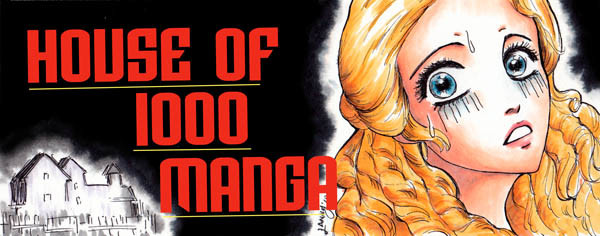
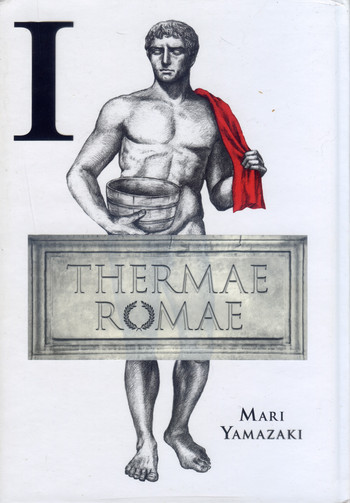
Rome, 129 AD. Lucius Quintus Modestus, an engineer specializing in thermae, or public bathhouses, has creative block. Soaking in a hot bath to ponder ideas, he gets sucked down a drain and emerges in a public bath in 20th century Japan! At first Lucius is shocked, confused, and even angered by the strange culture of the “flat-faces,” but he can't resist borrowing ideas to take back to his own empire. And so ancient Rome is introduced to such modern wonders of bath culture as shampoo hats, Hello Kitty soap dispensers, little bottles of flavored milk, and “No Running” signs with manga-style cartoon characters. Could this epic clash between two bathing-obsessed cultures produce the ultimate bathhouse experience?
Thermae Romae is the perfect manga for fans of a) classical history and b) taking baths. You might imagine that this audience is limited pretty much to the artist, Mari Yamazaki, an academic-minded manga-ka who's traveled the world indulging her love of history and archeology and currently resides in Chicago with her Italian husband. Yamazaki started her manga career late by the hook-’em-young standards of the industry—she published her first work in her late 30s, and was 40 by the time Thermae Romae put her on the map—but that means that, unlike most manga-ka, she's lived. Her work bubbles over with curiosity about the world and passion for knowledge.
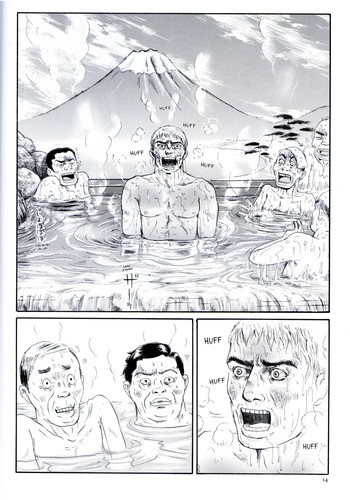
And she must not be the only person who loves Romans and bathtubs, because Thermae Romae was a hit in Japan. It sold over five million copies and inspired a feature film (which was able to take advantage of the lavish sets built for HBO's Rome), with a second film in the works. As for Yamazaki, she's already moved on to other intellectual passions: her most recent project is the as-yet-untranslated Jobs, a manga adaptation of Walter Isaacson's biography of Steve Jobs.
Thermae Romae started as a one-shot, but Yamazaki quickly finds ways to expand the basic fish-into-and-out-of-water gag. For a while, she gets mileage out of sending Lucius, via plumbing-based time travel, to different types of Japanese baths. Your standard Tokyo public bathhouse is fascinating enough to an ancient Roman, but what about a hot springs resort? What about a hot springs resort with monkeys? A water park? A luxury bathroom with built-in TV? One of those high-tech Japanese toilets that plays music and shoots water at your butt? Man, those toilets are the best. In one chapter Lucius even visits a rural village that practices old-school Shinto phallic worship at the local spring, a spectacle that would freak most modern-day Westerners—although Lucius notes it's not so different from the cult of Priapus in his own time.
Lucius takes all of this in as soberly as a citizen of the Roman empire possibly can when confronted with a hairdryer. His stoic non-reactions are much funnier than if he just flipped out, although sometimes he runs into something that completely overwhelms his sense of reality, like a car or a TV weather report. His Roman pride is wounded by the discovery of a culture with more advanced bathtub design, but invariably his intellectual curiosity gets the better of him. Musical toilets are beyond his scientific understanding (“I feel sorry for the slave who must play music the entire time I sit here…”), but he can approximate refreshments, amenities, and decor, even if he thinks the murals of Mt. Fuji in Japanese bathhouses are paintings of Vesuvius. Eventually he even grasps the principles of electricity and heated plumbing. Back in Rome, people are wowed by his innovations, and soon Lucius is designing baths and relaxing pools for Emperor Hadrian himself.
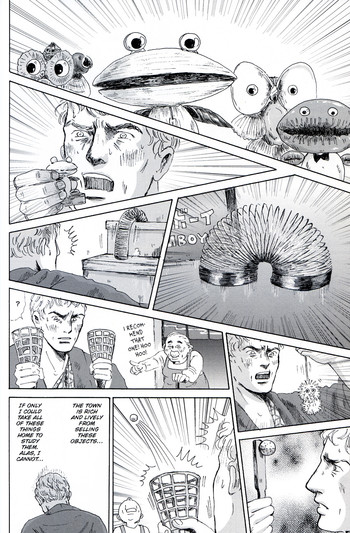
After running through what seems like every possible permutation on the theme of Japanese/Roman bathing, Yamazaki realizes that even a premise this weirdly amusing needs some kind of plot before it runs out of steam. Around the halfway point in the three-volume series, Lucius meets Satsuki, a young history professor who happens to specialize in ancient Rome. As Lucius gets caught up in the battle to save Satsuki's traditional hot-springs resort town, Thermae Romae changes from a time-traveling bath-themed historical comedy to a time-traveling bath-themed historical comedy romance. Move aside, Outlander series! Sexy Romans are so much better than sexy Highlanders! Think of how much more often they bathe!
In fact, modern Japanese and ancient Roman culture have a lot in common, besides both being very clean. Crossing between worlds, Lucius often finds solutions to the problems of one wealthy, hierarchal, honor-obsessed, tradition-bound yet rapidly changing culture in the other. The engineer himself is the model of Roman values—stoic, steadfast, coolly rational and analytical—which harmonize with old-fashioned Japanese values like those embodied by Satsuki's stern acupuncturist grandfather. If anything, the Japanese are too relaxed and jokey for Lucius's tastes, but he appreciates their culture's precision and attention to detail. And any time he screws up, people assume he's just a stupid gaijin (his Latin is usually mistaken for English) and laugh it off.
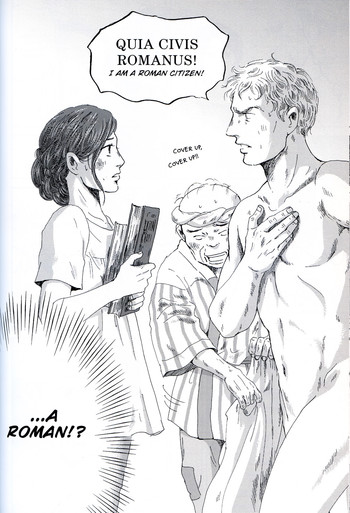
And both cultures—and their bathing practices—are old. There's an undercurrent of nostalgia to Yamazaki's portrayal of Japanese bathhouses and hot springs, because these institutions are rapidly becoming as much things of the past as a Roman thermae. Until recently public bathing was part of everyday life in Japan, but nowadays most homes have indoor bathtubs and there's little reason to go down the street for a soak. Hot springs are still popular vacation spots, but only aficionados—and foreign tourists—seek them out on a regular basis. Most of the Japanese bathhouses and springs Lucius visits are full of old folks, drinking beers and cracking jokes as they've done for decades, but not expecting young people to show up. Maybe the only person who can appreciate Japan's bathing culture these days is a time traveler from an even earlier era.
Yamazaki intersperses each chapter with essays about Rome, baths, and her extensive experiences with both. This is one of the most well-researched historical comics I've encountered, touching on Roman history great (Hadrian's efforts to find a successor, sometimes complicated by his weakness for good-looking men) and small (Roman snacks like sea urchin and fried dormice, seasoned with the ubiquitous fish-sauce seasoning garum—and yes, Lucius is relieved to find that the “flat-faces” have fish sauce too). Yamazaki describes visiting bathhouses and water parks, spending a day in geisha training at a traditional resort, and the agony of living in a house in Portugal with no bathtub.
The art in Thermae Romae starts out stiff and laborious, as Yamazaki struggles to draw Roman architecture, modern-day bathhouses, and white people. (She makes Lucius look as much like a classical statue as possible, which doesn't always allow for fluid, naturalistic movement, but does give him awesome abs.) Over time it gets better, eventually settling into a detailed, but looser and more energetic, sienen style. Yamazaki can pull off visual gags, but the strength of Thermae Romae remains its writing.
And it's some top-notch writing. I should probably stop deciding that every manga I read is the new greatest manga of all time, but Thermae Romae is such a satisfying combination of comedy, drama, history, social observation, and wackiness. Yen Press published the series in a gorgeous hardcover edition deserving of a manga of this caliber, although I'd like to see a cheaper paperback version for readers who can't shell out $35 a volume for the good stuff. Or who want to take it into the bath.
discuss this in the forum (12 posts) |
this article has been modified since it was originally posted; see change history